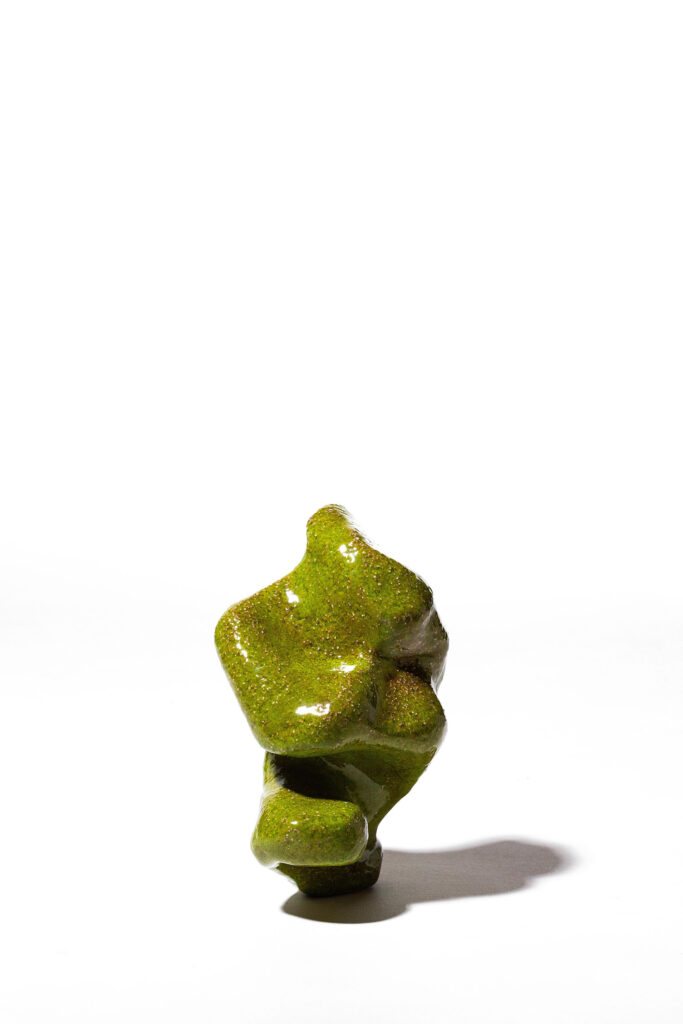Ceramic Brussels, 22 - 26.01.2025: Transit Zone, Peter Aerts
Transit Zone, Peter Aerts in Ceramic Brussels, Tour & Taxis, sheds 1 & 2, Picardstr. 3, 1000 Brussels
Booth A 18: a new corpus of 13 sculptures.
22.01: preview: 3 – 6 pm [by invitation only]
vernissage: 6 – 10 pm [by invitation only]
23 – 26.01: public: 11 am – 7 pm
all photos: copyright Yannick Milpas











Peter Aerts is a Belgian artist whose stoneware sculptures resonate with the primal energies of natural rocks and stones, capturing the silent vitality and ancient wisdom embedded in the earth. His work, informed by extensive travel and study of geological formations in Greece and West Africa, embodies the idiosyncratic findings and interpretations of these journeys. Aerts’ suite of sculptures for Ceramic Brussels 2025 is the culmination of years of observation, exploration, and dialogue with the material world.
Born in Antwerp in 1988, Aerts initially pursued Languages & Letters at the University of Antwerp while simultaneously studying Sculpture at the Royal Academy of Fine Arts. However, Aerts left the Academy to focus on his university studies, later moving to Berlin to study film directing. Immersed in Berlin’s vibrant artistic scene during the early 2010’s, he worked as a cameraman in the music industry, captivated by the world of moving images. Yet, even amidst this dynamic environment, he began to sense that his true language lay not in motion but in static form. Living in Berlin during this period, Aerts was part of the last ecstatic window of a city where artists from around the world could create full-time, free from the pressures of economic interest. These fruitful years of freedom, along with his encounters with the painter Nick Modrzewski, profoundly shaped Aerts’ relationship to art and the development of his own aesthetic language.
In 2014, Aerts left Berlin to travel through Africa and Greece, ultimately settling on the tiny Aegean island of Donoussa. This ancient, arid landscape, with its rich variety of cacti and silent inhabitants—stones, fossils, shells, and rocks—became a profound source of inspiration. Fascinated by their shapes, textures, and the hidden energies they seemed to hold, Aerts began to “listen” to these silent forms. This meditative encounter with the land deepened his understanding of time, permanence, and transformation.
After two years on Donoussa, Aerts returned to Belgium, bringing back over 300 cacti and settling on a piece of land with a 19th century farm. While molding a lump of clay to create a planter, Aerts experienced a pivotal moment—an awakening to sculpture as his true calling. Clay, as a material, became his medium of choice, demanding to be kneaded, shaped, and fired. Aerts soon acquired his first analogue gas kiln, crafted by a Belgian architect in the 1980s, beginning a full-time practice dedicated to the creation of ceramic sculptures. The immensely corporal process of throwing, manipulating, and kneading clay using his whole body became central to his practice, as he built heavy stoneware “rocks” of his own. He applied high-stakes glaze firings to these works, developing a rich repertoire of colors that speak to the elemental forces at play in the natural world.
Today, Aerts has fully embraced this path, restoring his farm, expanding his studio, and acquiring advanced equipment to push the boundaries of his craft. His work reflects a deep connection to his earlier studies, travels, and experiences, which have become the “clay” of his life—essential and formative. His studio process is grounded in an intuitive and introspective approach to his materials. In his own words: “I explore the human ability to rely on inner impulses as a guide to create natural forms.”
Through his highly tactile and intuitive practice, Aerts continues to explore the intersections of time, materiality, and form. His sculptures invite viewers to engage with the timeless, enigmatic power of the earth, revealing the silent yet vibrant stories held within stone and clay.
Text Leon Lemahieu, photos Yannick Milpas, 2025